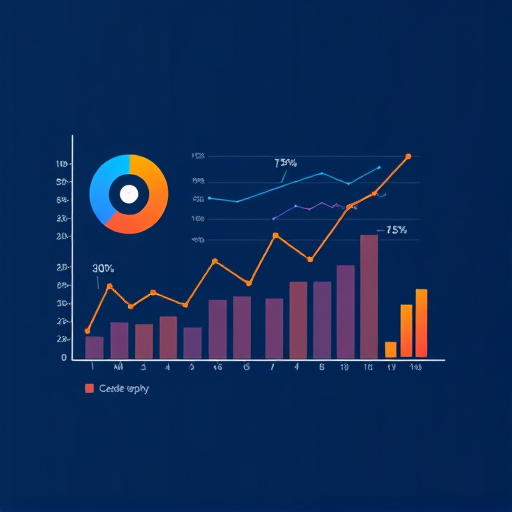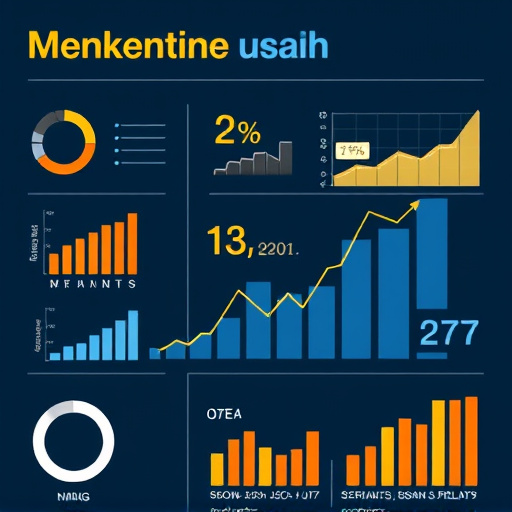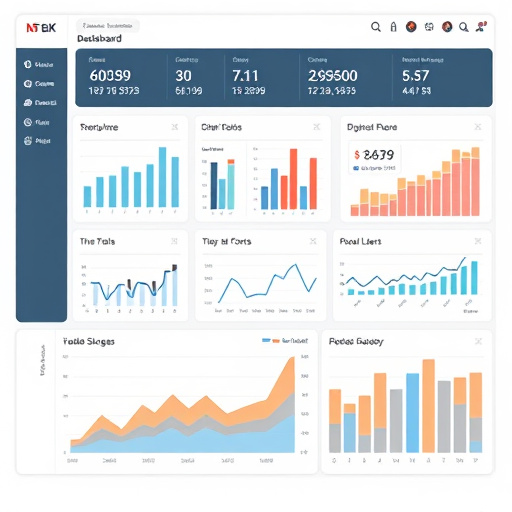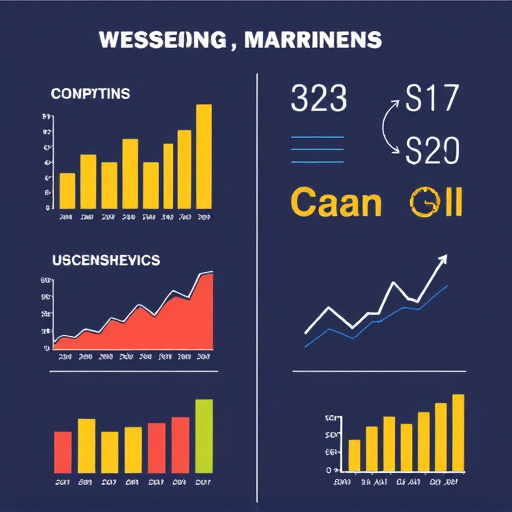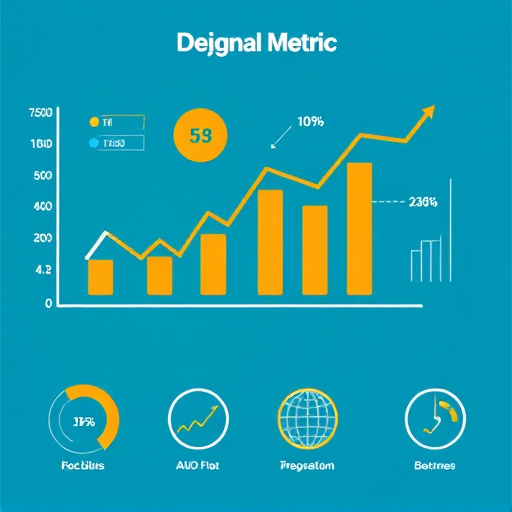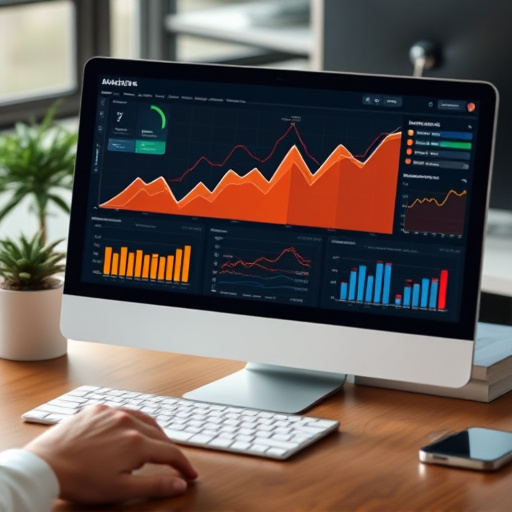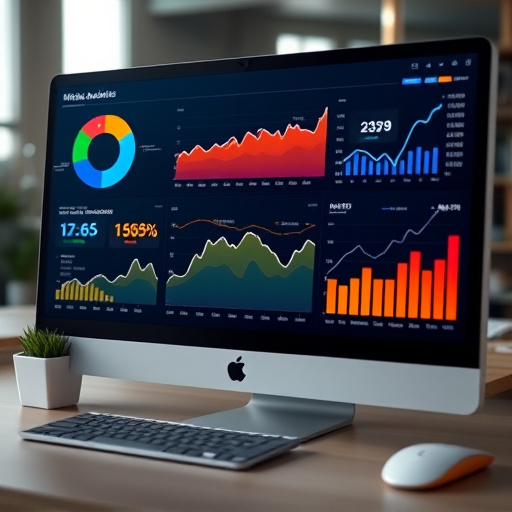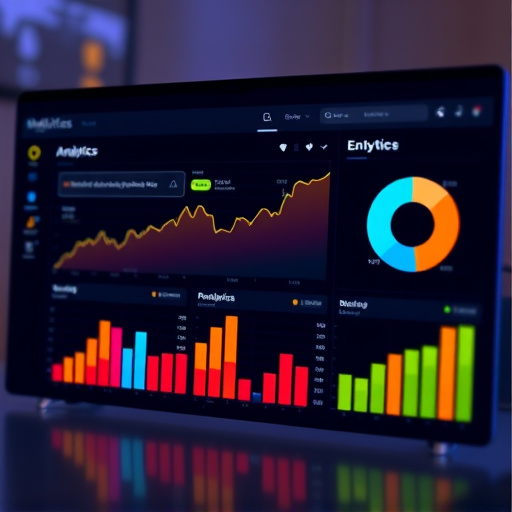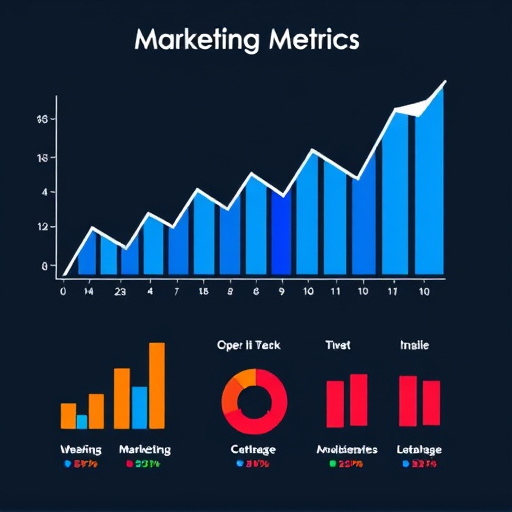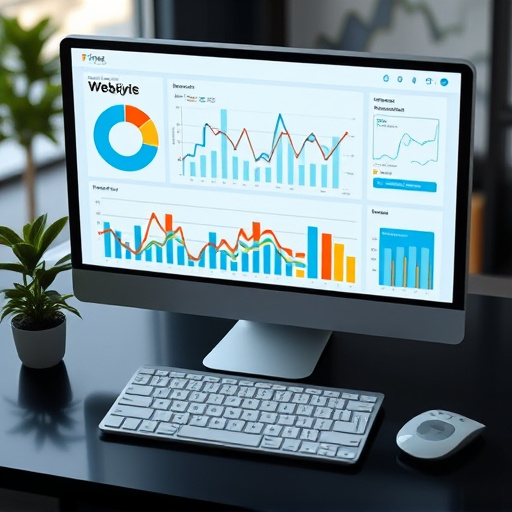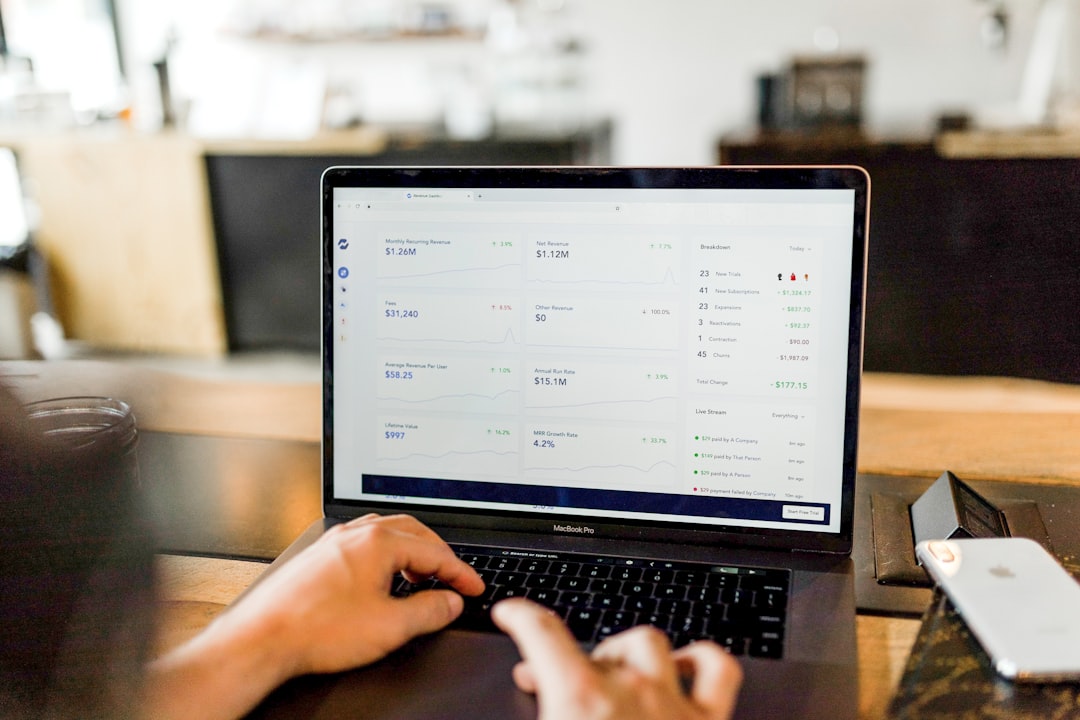Analytics: Unlocking Insights for a Data-Driven World
Introduction
In today’s digital age, where data is the new currency, analytics stands as a powerful tool that transforms raw information into meaningful insights. Analytics, at its core, involves the systematic analysis of data to uncover patterns, trends, and valuable knowledge. This article aims to take readers on a comprehensive journey through the world of analytics, exploring its various facets, global impact, technological advancements, challenges, and future potential. By delving into these aspects, we will reveal why analytics is not just a buzzword but a fundamental driver of decision-making across industries.
Understanding Analytics: Unraveling the Basics
Definition: Analytics, in its essence, refers to the process of examining and interpreting data to extract meaningful insights and support decision-making. It involves a series of steps, including data collection, cleaning, analysis, interpretation, and communication of findings.
Core Components:
-
Data Collection: The foundation of analytics lies in gathering relevant data from various sources such as databases, sensors, social media, surveys, and more. This step ensures that the information is accurate, complete, and representative of the area of interest.
-
Data Preparation (Cleaning and Transformation): Before analysis, data often requires cleaning to handle missing values, outliers, and inconsistencies. It also involves transforming data into a suitable format for analysis, ensuring it is structured and organized effectively.
-
Analysis: This phase employs various statistical, mathematical, and computational techniques to identify patterns, trends, correlations, and anomalies in the data. Common analytical methods include descriptive analytics (summarizing historical data), diagnostic analytics (identifying causes behind issues), predictive analytics (forecasting future trends), and prescriptive analytics (suggesting actions).
-
Interpretation: Here, analysts translate the results of the analysis into understandable insights and stories. This step involves visualizing data through charts, graphs, and dashboards to communicate complex findings effectively.
-
Actionable Insights and Communication: The ultimate goal is to provide recommendations and support decision-making processes by presenting insights in a clear and concise manner. Effective communication ensures that stakeholders can understand the implications of the analysis and take informed actions.
Historical Context:
Analytics has evolved over centuries, with its roots tracing back to the 18th century when early forms of statistical analysis were used to make sense of complex data sets. The field gained momentum in the 20th century with advancements in computer technology, enabling more sophisticated data processing and analysis. The advent of the internet and digital technologies further revolutionized analytics by making vast amounts of data readily available.
Today, analytics has permeated every sector, from business and healthcare to science and government, empowering organizations and researchers to make data-driven decisions, optimize processes, and gain competitive advantages.
Global Impact and Trends: A World Transformed by Analytics
Analytics has left an indelible mark on the global landscape, shaping industries and societies in profound ways. Its impact is evident across various regions, each with its unique analytical applications and challenges.
Key Global Trends:
-
Digitalization and Data Growth: The digital revolution has led to an explosion of data generation, with organizations collecting and storing vast amounts of information. This trend presents both opportunities and challenges for analytics, as the volume, velocity, and variety of data require advanced tools and techniques for effective processing.
-
Cloud Computing: Cloud-based analytics platforms have become a game-changer, offering scalable, flexible, and cost-effective solutions. They enable businesses to analyze large datasets without substantial upfront infrastructure investments, democratizing access to analytics capabilities.
-
Artificial Intelligence (AI) and Machine Learning (ML): AI and ML are transforming analytics by automating complex tasks, such as pattern recognition and predictive modeling. These technologies enhance the efficiency and accuracy of analysis, enabling more advanced insights and applications.
-
Real-time Analytics: The need for instant insights has driven the development of real-time analytics, allowing organizations to make quick decisions based on up-to-date data. This trend is particularly significant in dynamic industries like finance and e-commerce.
-
Personalization and Customer Experience: Analytics plays a pivotal role in personalizing customer interactions, enabling businesses to tailor products, services, and marketing strategies to individual preferences. This trend has significantly impacted retail, media, and entertainment industries.
Regional Impact:
-
North America and Europe: These regions are at the forefront of analytics adoption, with advanced technologies and a highly skilled workforce. They have seen significant growth in big data analytics, AI, and machine learning applications across various sectors, including healthcare, finance, and manufacturing.
-
Asia-Pacific: The region is witnessing rapid digital transformation, driving the demand for analytics solutions. Countries like China and India are investing heavily in technology infrastructure, fostering an environment conducive to analytics innovation. Sectors such as e-commerce and financial services are leveraging analytics to gain a competitive edge.
-
Latin America and Middle East/Africa: While these regions may have lagged in terms of technological adoption, they are showing promising growth. Analytics is being utilized to address specific regional challenges, such as improving healthcare delivery and enhancing agricultural productivity.
Economic Considerations: The Business of Analytics
The economic implications of analytics are vast, shaping markets, driving investments, and influencing decision-making at all levels of organizations.
Market Dynamics:
-
Competitive Advantage: Analytics enables businesses to gain insights into market trends, consumer behavior, and operational efficiencies, providing a competitive edge. Companies that leverage analytics effectively can anticipate market shifts, optimize pricing strategies, and enhance product development.
-
Industry Disruption: The rise of analytics has disrupted traditional business models, particularly in sectors like retail and transportation. Businesses that fail to adapt to data-driven trends risk becoming obsolete, while those that embrace analytics gain a strategic advantage.
-
New Business Models: Analytics has given birth to entirely new business models, such as data brokerage and analytics-as-a-service (AaaS). These models provide specialized analytics solutions to various organizations, fostering collaboration and innovation.
Investment Patterns:
-
Venture Capital and Startups: The analytics space has attracted significant venture capital investment, fueling the growth of numerous startups focused on niche analytical tools and platforms. These investments reflect the high potential for disruptive innovations in the field.
-
Corporate Investments: Established companies are also investing heavily in analytics capabilities, either in-house or through partnerships with specialized firms. This trend is driven by the need to stay competitive and leverage data effectively for strategic decision-making.
-
Government Initiatives: Governments worldwide recognize the economic potential of analytics and are investing in research, development, and infrastructure to support its growth. These investments aim to foster innovation, create jobs, and enhance public service delivery.
Technological Advancements: Driving Innovation Forward
Technological breakthroughs have been a cornerstone of analytics’ evolution, pushing its capabilities and applications to new heights.
Key Advancements:
-
Big Data Technologies: The rise of big data has expanded the scope of analytics by enabling the processing and analysis of massive datasets. Technologies like Hadoop and Spark have revolutionized how organizations handle and extract value from large-scale data.
-
Artificial Intelligence (AI) and Machine Learning (ML): AI and ML algorithms have become essential tools in analytics, allowing for automated decision-making and predictive modeling. These technologies power virtual assistants, image recognition systems, and recommendation engines, enhancing user experiences and business operations.
-
Internet of Things (IoT): IoT devices generate vast amounts of data, creating new opportunities for analytics. By analyzing sensor data from smart homes, cities, and industrial machinery, organizations can optimize processes, improve efficiency, and enable predictive maintenance.
-
Natural Language Processing (NLP): NLP enables machines to understand human language, opening doors for sentiment analysis, text mining, and language translation. This technology is revolutionizing customer service through chatbots and enhancing content analysis in various industries.
-
Cloud Computing: Cloud platforms offer scalable analytics solutions, allowing businesses to access advanced analytical tools without significant upfront costs. They facilitate collaboration, data sharing, and real-time insights, enabling organizations to be more agile and responsive.
Policy and Regulation: Navigating the Legal Landscape
As analytics continues to shape society and economies, policy frameworks and regulations play a crucial role in ensuring its responsible and ethical use.
Key Policies and Regulations:
-
Data Privacy Laws: With the increasing collection and processing of personal data, privacy laws like the General Data Protection Regulation (GDPR) in Europe and California’s Consumer Privacy Act (CCPA) are designed to protect individuals’ rights over their data. These regulations impose strict rules on data handling, consent, and transparency.
-
Ethical Guidelines: Many countries and organizations have developed ethical guidelines for analytics to ensure responsible use. These guidelines address issues like bias in algorithms, privacy protection, transparency, and accountability. For example, the OECD’s Principles on Artificial Intelligence provide a framework for ethical AI development and deployment.
-
Industry-Specific Regulations: Certain industries have unique regulatory requirements for analytics. Healthcare, for instance, has strict data security and patient consent regulations. Financial services are subject to regulations like MiFID II in Europe, which mandates transparency and disclosure of algorithmic trading activities.
-
Data Ownership and Intellectual Property: The ownership and protection of analytical insights generated from data are critical issues. Legal frameworks are evolving to address these concerns, recognizing data as a valuable asset and providing intellectual property rights for innovative analytical methods.
Challenges and Criticisms: Overcoming Barriers
Despite its immense potential, analytics faces several challenges and criticisms that must be addressed to ensure its widespread adoption and acceptance.
Main Challenges:
-
Data Quality and Availability: The accuracy of analytical insights is heavily dependent on the quality and completeness of data. Inconsistent, incomplete, or inaccurate data can lead to misleading results. Ensuring data quality and access to reliable datasets remains a significant challenge, especially in diverse and complex environments.
-
Skills Gap: There is a growing demand for skilled professionals who can handle advanced analytics techniques. The skills gap between the available workforce and the requirements of the job market is a significant hurdle. Organizations are investing in training and education to bridge this gap but face challenges in keeping up with rapid technological advancements.
-
Ethical and Privacy Concerns: As analytics becomes more pervasive, ethical considerations and privacy become paramount. Bias in algorithms, data manipulation, and unauthorized data sharing are potential risks. Building trust and ensuring transparency in analytical processes are essential to addressing these concerns.
-
Interpretability and Explainability: Complex analytical models, particularly those based on AI and ML, can be challenging to interpret. Understanding the reasoning behind predictive results is crucial for building trust and making informed decisions. Researchers are developing methods to explain these models’ decisions, ensuring their reliability and acceptability.
Strategies for Overcoming Challenges:
-
Data Governance and Quality Management: Implementing robust data governance practices ensures data quality, security, and compliance with regulations. Organizations should establish standards, define data ownership, and implement processes to handle data throughout its lifecycle.
-
Education and Training: Investing in education and training programs can help bridge the skills gap. Collaborating with academic institutions, offering mentorship programs, and providing continuous professional development opportunities are effective strategies to build a skilled analytics workforce.
-
Ethical Frameworks and Transparency: Developing and adopting ethical guidelines for data collection, processing, and usage is essential. Organizations should prioritize transparency in their analytical practices, ensuring stakeholders understand the implications of data-driven decisions.
-
Collaborative Research: Encouraging collaboration between industry, academia, and government can foster innovative solutions to complex challenges. Joint research initiatives can lead to breakthroughs in interpretable AI, bias mitigation, and ethical analytics practices.
Case Studies: Real-World Applications of Analytics
1. Healthcare: Precision Medicine and Patient Outcomes
A leading healthcare organization, GlobalHealth, faced the challenge of improving patient outcomes while reducing costs. They leveraged analytics to develop a precision medicine platform that analyzes patient data, including genetic profiles, medical history, and lifestyle factors.
Solution: The platform uses advanced machine learning algorithms to predict disease progression and recommend personalized treatment plans. By analyzing real-world data, GlobalHealth could identify patterns linked to positive outcomes, enabling doctors to make more informed decisions.
Impact: This approach led to improved patient satisfaction, reduced treatment costs, and enhanced clinical outcomes. The system’s ability to learn from diverse patient populations resulted in more accurate predictions, especially for complex conditions.
2. Retail: Personalized Shopping Experiences
Retail giant ShopSmart wanted to enhance its online shopping platform by offering personalized product recommendations. They employed analytics to analyze customer behavior, purchase history, and browsing patterns.
Solution: Using collaborative filtering and content-based recommendation techniques, ShopSmart developed a sophisticated recommendation engine. This system learns from individual user preferences and provides tailored suggestions, increasing the chances of purchase conversion.
Impact: The personalized shopping experience resulted in a 30% increase in repeat purchases within six months. Customer feedback highlighted the effectiveness of product recommendations, leading to improved customer retention and brand loyalty.
3. Finance: Predicting Stock Market Trends
A financial analytics startup, DataTrends, aims to help investors make informed decisions by predicting stock market trends using advanced analytical techniques.
Solution: DataTrends employs historical and real-time data sources, including news sentiment analysis, social media trends, and traditional financial indicators. They utilize machine learning models to identify patterns and correlations, generating predictive insights for stock prices.
Impact: The startup’s algorithms have consistently outperformed traditional financial models, attracting significant investment from venture capital firms. Their clients, including institutional investors and high-net-worth individuals, have achieved better returns by acting on DataTrends’ predictions.
Future Prospects: Shaping the Analytics Landscape Ahead
As analytics continues to evolve, several emerging trends and growth areas hold the key to its future potential.
Potential Growth Areas:
-
Advanced AI and Automation: The integration of advanced AI and automation will streamline analytical processes, making them more efficient and accurate. Automated insights generation, automated report creation, and intelligent data preparation are likely to become commonplace.
-
Real-time Analytics and Decision-making: Real-time analytics will become increasingly important as businesses seek instant insights for quick decision-making. This trend will be fueled by the proliferation of IoT devices, sensors, and high-speed data processing capabilities.
-
Explainable AI (XAI): As AI becomes more pervasive, the need for explainable models will grow. XAI focuses on developing algorithms that can provide transparent explanations for their predictions, building trust and ensuring fairness in decision-making processes.
-
Ethical Analytics and Trust: With increasing scrutiny of analytics practices, ethical considerations will be at the forefront. Building trust through transparent and responsible data handling, bias mitigation, and privacy protection will be essential to gaining stakeholder acceptance.
Emerging Trends:
-
Edge Computing for Analytics: Edge computing, which brings computation power closer to data sources, will enable faster and more efficient analytics, especially in IoT and autonomous vehicle applications.
-
Graph Analytics: Graph analytics, which models relationships between entities, will gain prominence as organizations seek to understand complex networks and interactions. This technology is valuable in social media analysis, supply chain management, and fraud detection.
-
Predictive Maintenance and Industry 4.0: Analytics will play a pivotal role in the Fourth Industrial Revolution (Industry 4.0), enabling predictive maintenance, smart factories, and optimized supply chains. By analyzing machine data, organizations can anticipate equipment failures and improve operational efficiency.
Conclusion:
Analytics has emerged as a powerful tool, transforming industries, enhancing decision-making, and shaping our future. From healthcare to finance, retail to transportation, its applications are vast and diverse. As technology continues to advance, analytics will become even more sophisticated, offering unprecedented insights and opportunities. However, addressing challenges related to data quality, skills, ethics, and privacy is crucial for realizing the full potential of analytics while ensuring its responsible use. The future of analytics lies in fostering collaboration, embracing ethical practices, and harnessing the power of advanced technologies to create a more informed, efficient, and connected world.
Reviewly Local Search provides businesses with a toolkit to analyze key performance indicators for local search metrics. By understanding click-through rates, review volume, and location visibility, companies can optimize their digital footprint…….
Continue Reading
Reviewly Local Search is a powerful platform that helps businesses optimize their local market strategies using real-time customer review data and advanced analytics. By comparing metrics, understanding trends, and assessing marketing effectiven…….
Continue Reading
The Reviewly Local Search Dashboard is a powerful tool for businesses, offering comprehensive analytics on local search performance and customer interactions. By tracking key metrics like review volume, website traffic, conversion rates, and loc…….
Continue Reading
The Reviewly Local Search dashboard is a powerful tool designed to help businesses manage and optimize their local online presence. It provides a centralized, intuitive interface for monitoring reviews, ratings, click-through rates, impression c…….
Continue Reading
The Reviewly Local Search dashboard is a comprehensive, user-friendly tool designed to help businesses understand and engage with their local customer base. By consolidating customer reviews, ratings, and feedback from various platforms, it offe…….
Continue Reading
In a data-heavy market, Reviewly Local Search provides an advanced analytics platform for businesses to thrive. Its intuitive interface and powerful tools enable efficient navigation of complex datasets, uncovering local trends and customer insi…….
Continue Reading
Reviewly Local Search analytics is a comprehensive tool for businesses aiming to dominate their local markets. By analyzing customer reviews and search data, it reveals audience preferences, behaviors, and pain points, enabling data-driven decis…….
Continue Reading
Local search analytics, such as those provided by Reviewly Local Search, are essential for businesses aiming to optimize online visibility and reach within specific geographic areas. By tracking interactions on platforms like Google, Yelp, or Fa…….
Continue Reading
Leveraging Analytics on platforms like Reviewly is crucial for maximizing local search visibility. By tracking key metrics, understanding consumer behavior, and optimizing strategies based on insights, businesses can enhance their online presenc…….
Continue Reading
The Reviewly Local Search platform leverages cutting-edge analytics to help businesses boost online visibility and connect with local customers. It offers comprehensive insights into search performance within specific geographic areas, enabling…….
Continue Reading
The Reviewly Local Search platform equips businesses with advanced analytics tools to boost online visibility and local search rankings. By tracking key metrics, analyzing competitors, and providing real-time data on platforms like Google and lo…….
Continue Reading
In today's data-driven world, local search tools like Reviewly offer advanced analytics to transform raw data into actionable intelligence. By analyzing market trends, customer behavior, and competitive landscapes, businesses can make infor…….
Continue Reading
In a data-driven world, Reviewly Local Search analytics tools empower businesses to navigate performance reviews effectively. By offering intuitive visualizations and actionable recommendations, these platforms unlock valuable insights from empl…….
Continue Reading
Reviewly Local Search is a comprehensive platform designed to help local businesses optimize their online visibility and engagement by managing, analyzing, and enhancing customer reviews across Google, Facebook, and Yelp. Key features include se…….
Continue Reading
Reviewly Local Search offers powerful analytics solutions for local businesses, helping them understand customer behavior and preferences through geographic data. By leveraging customer reviews and behaviors, companies can make informed decision…….
Continue Reading
Understanding local search analytics using tools like Reviewly gives businesses crucial insights into customer behavior and market trends. By tracking keywords, user interactions, and review perceptions, companies can optimize marketing strategi…….
Continue Reading
Reviewly Local Search provides businesses with cutting-edge analytics tools to thrive in competitive markets by understanding customer behavior, trends, and preferences specific to their area. Through detailed insights into traffic sources, keyw…….
Continue Reading
Reviewly Local Search is a powerful analytics platform that helps businesses understand local search trends and customer behavior, enabling them to optimize their online presence. By tracking query times, industry-specific terms, review volume,…….
Continue Reading
Businesses seeking local online prominence should leverage analytics tools like Reviewly Local Search. This technology provides insights into location-based search trends, helping optimize rankings and outpace competition in a bustling digital l…….
Continue Reading
